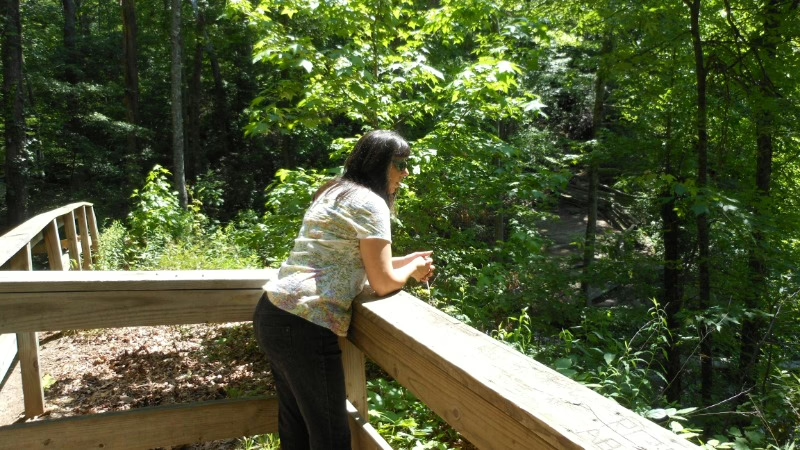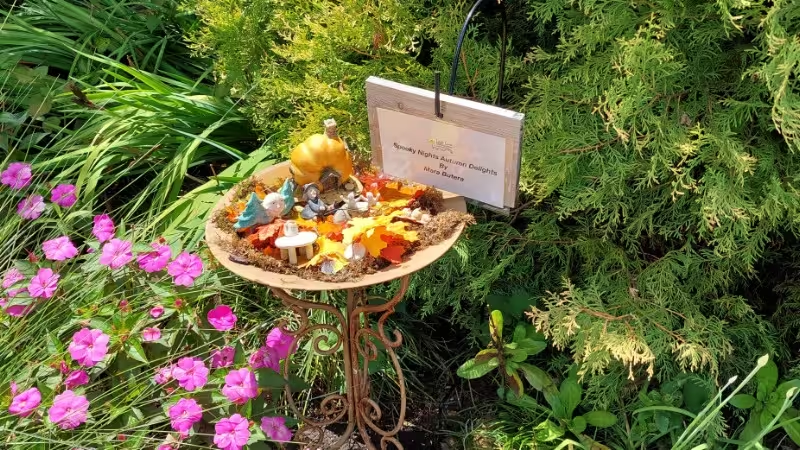
Table of Contents
Grief is a journey unlike any other. It arrives unexpectedly, unfolds in unpredictable ways, and leaves a lasting imprint on our hearts and minds. When coping with the loss of a loved one, traditional therapeutic approaches can provide valuable support, yet many find that integrating nature and reflective practices deepens the healing process. One such practice is journaling in nature—a mindful, ecotherapy-informed approach that combines the restorative power of natural environments with the emotional clarity that comes from writing. At the Mindful Ecotherapy Center, we encourage people navigating grief to explore journaling in nature as a way to process emotions, honor memories, and cultivate resilience.
The Power of Writing Through Grief
Journaling has long been recognized as a therapeutic tool for coping with loss. Writing allows us to externalize emotions that may otherwise feel overwhelming or inexpressible. When grief is raw, thoughts can spiral, and emotions may feel unmanageable. Journaling provides a safe space to explore these feelings, articulate memories, and make sense of the complex landscape of mourning.
Research shows that expressive writing can reduce stress, improve mood, and promote overall emotional well-being. Writing about grief helps organize thoughts, clarify emotions, and foster a sense of control during a time when life may feel chaotic and unpredictable. Beyond cognitive processing, journaling also nurtures self-compassion, encouraging people to honor their own responses without judgment.
Why Nature Enhances the Journaling Experience
While journaling indoors has benefits, combining it with nature amplifies its healing potential. The natural environment inherently calms the nervous system, reduces stress hormones, and invites a sense of groundedness. Sunlight, fresh air, and sensory engagement with plants, soil, and water help regulate emotions and provide a stable, nurturing context for reflection.
Nature also offers symbolic mirrors for the grieving process. Observing seasonal changes like buds blooming, leaves falling, and trees standing resilient through storms can help mourners recognize that grief, like nature, is cyclical. The external world reminds us that while life involves loss, renewal and growth are always possible. Writing in the presence of these natural rhythms supports both emotional acceptance and hope.
Mindful Journaling Practices in Nature
Incorporating mindfulness into journaling deepens its effectiveness. Mindfulness encourages full attention to the present moment, allowing people to observe emotions without judgment and respond with awareness rather than impulsivity. When journaling in nature, mindfulness can guide each stage of the practice:
- Choosing a Setting – Select a natural space where you feel safe and uninterrupted. This might be a quiet park, a forest clearing, a riverbank, or even a garden. The environment should invite reflection and comfort.
- Grounding Before Writing – Begin with a brief mindfulness exercise. Close your eyes, take several deep breaths, and observe sensations in your body and surroundings. Notice the rustle of leaves, the warmth of sunlight, or the sound of flowing water. Grounding in this way helps center attention and eases anxiety before writing.
- Free Writing – Allow thoughts and emotions to flow onto the page without censoring or organizing them. This practice encourages authenticity and catharsis. You might start by acknowledging your grief directly, writing letters to the loved one you lost, or recording memories and emotions that arise spontaneously.
- Sensory Integration – Engage all five senses as you write. Describe what you see, hear, smell, touch, and even taste. Sensory journaling strengthens the connection between mind and body, helping the grieving process feel embodied rather than abstract.
- Reflective Questions – After free writing, consider guiding prompts such as: “What am I feeling right now?” “What memories bring me comfort?” “What small steps toward healing can I take today?” Thoughtful prompts help structure the journaling session while still honoring spontaneity.
- Closing Ritual – Conclude your session with a moment of reflection or gratitude. You might fold the journal and place it somewhere safe, offer a silent prayer, or simply sit in quiet observation. This closure signals the end of the session and integrates the emotional work completed.
Therapeutic Benefits
Journaling in nature offers multidimensional benefits for coping with loss:
- Emotional Release – Writing allows grief, sadness, anger, and longing to surface in a contained and safe way.
- Perspective and Clarity – Observing nature while journaling helps mourners contextualize their loss within the broader cycles of life and change.
- Mind-Body Integration – Sensory awareness in natural environments fosters embodied processing of grief, reducing tension and promoting calm.
- Ritual and Routine – Establishing regular journaling sessions creates a sense of predictability and structure, which can be stabilizing during emotional upheaval.
- Legacy and Connection – Writing about a loved one preserves memories, celebrates life, and strengthens the sense of ongoing connection.
Practical Tips for Starting
- Keep a dedicated journal for your outdoor writing sessions.
- Schedule regular time for journaling in nature, even if brief.
- Dress comfortably and bring any supplies you may need, such as water, a blanket, or writing tools.
- Allow flexibility—some days may invite deep emotional expression, others gentle observation or gratitude.
- Consider pairing journaling with mindful movement, such as slow walking, yoga stretches, or forest bathing, to integrate body and mind.
Conclusion
Grieving is a deeply personal, often nonlinear process. While no single method can erase loss, mindfulness-based journaling in nature provides a supportive, restorative pathway. By combining reflective writing with the healing rhythms of the natural world, people can process emotions, cultivate self-compassion, and find symbolic and literal space to honor what has been lost.
Through this practice, grief becomes not only a journey of mourning but also an opportunity for connection to oneself, to loved ones, and to the world around us. Nature’s presence, combined with the introspection of journaling, creates a sanctuary for emotional healing and growth. At the Mindful Ecotherapy Center, we encourage people coping with loss to explore journaling in nature as a daily or weekly practice, offering both solace and insight on the path toward resilience and renewal.
The Mindful Ecotherapy Center on YouTube
Subscribe to the Mindful Ecotherapy Center’s YouTube channel to bring peace, presence, and healing into your daily life. Our videos guide you through mindfulness-based ecotherapy practices, including forest bathing, tree planting rituals, nature meditations, and reflective exercises for grief, stress, and emotional well-being. Whether you’re seeking to reconnect with the natural world, cultivate inner calm, or find restorative tools for personal growth, our content offers practical guidance, inspiration, and community support. Join us to explore the transformative power of nature and mindfulness, and start your journey toward balance, resilience, and deeper connection today!











